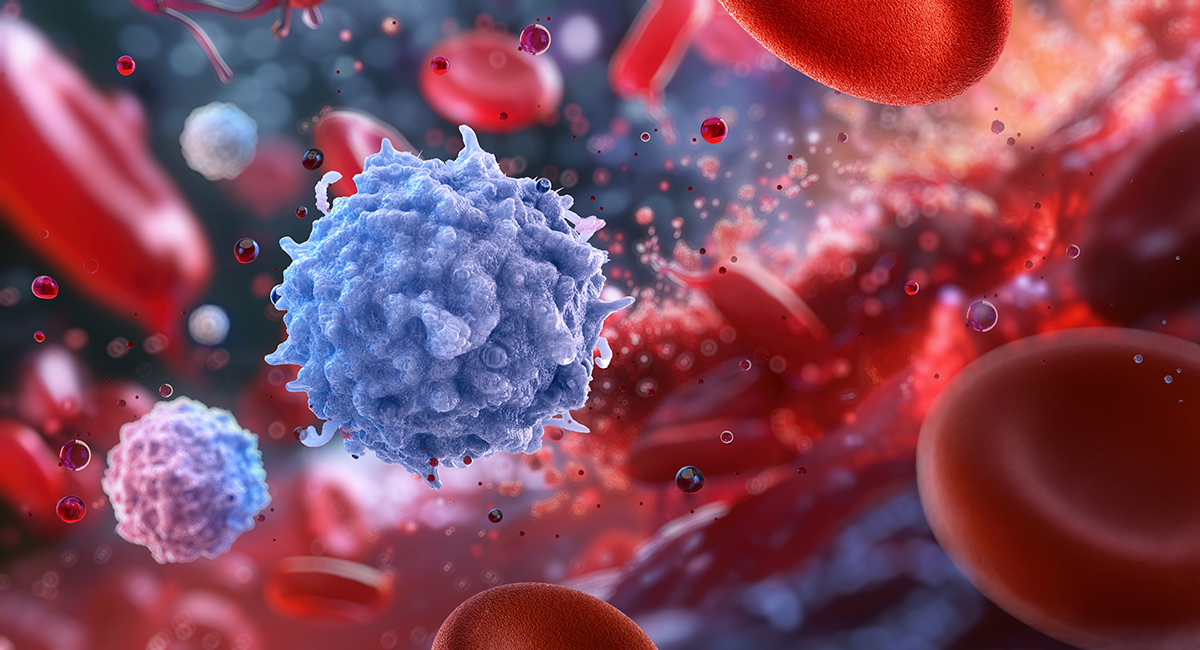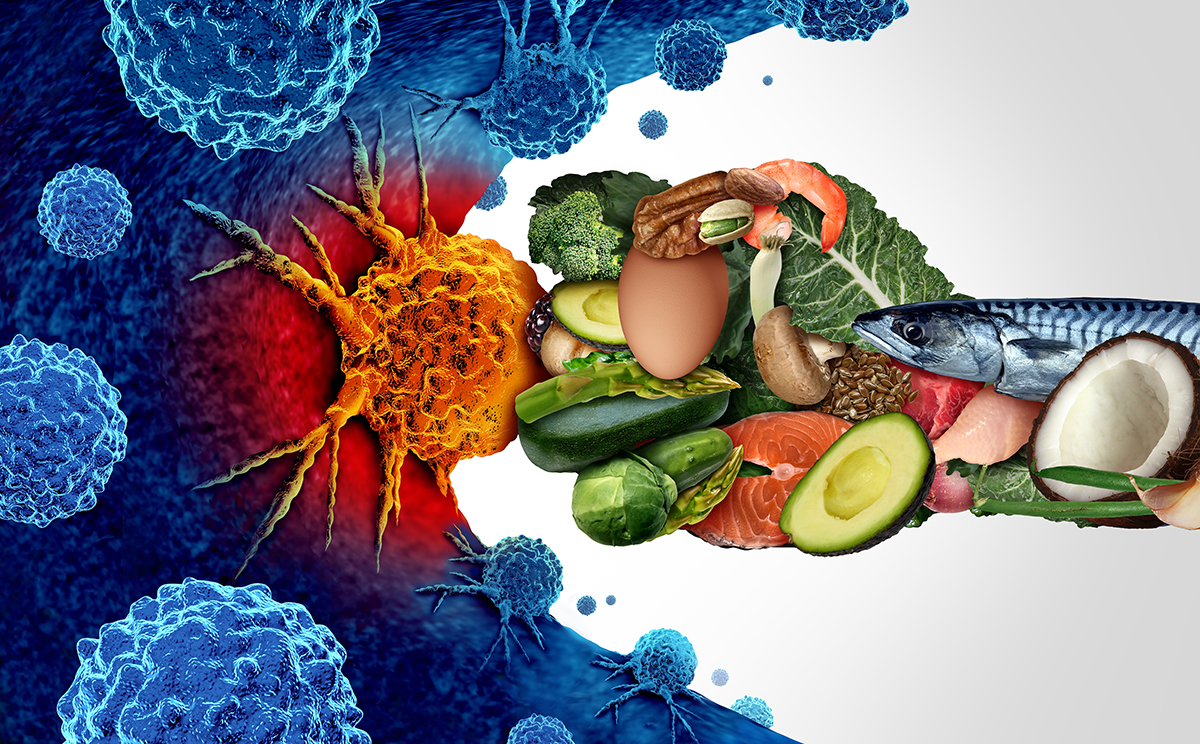栄養
Nutrition
あなたは、あなたが食べてきたそのものです
Nutrition
あなたは、あなたが食べてきたそのものです
2025.10.31
——腸管免疫系の役割と栄養療法による調整
腸は、全身の免疫細胞の約70〜80%が集まる最大の免疫器官であり、腸管関連リンパ組織(GALT:Gut-Associated Lymphoid Tissue)は、外敵(病原菌、ウイルス、アレルゲン)と共生菌、食物成分を識別しながら、免疫応答と寛容のバランスを維持する働きを担っています。[1]

Lymphocytes, immune cells, white blood cells. Adaptive immune system, showcasing T-cells, B-cells, NK cells. Human lymphocytes combating infections.
この腸管免疫の働きにおいて、重要な役割を果たすのが上皮細胞と粘液層です。腸の上皮細胞はバリアとして外部因子の侵入を防ぎながら、抗原提示細胞(M細胞や樹状細胞)と連携して免疫応答を調整しています。
また、パネート細胞が分泌する抗菌ペプチドや、ゴブレット細胞が分泌する粘液が、腸内の常在菌と病原体を選別する防御線となっています。[2]

body immune response viral infection by releasing Cytokines, Cancer Immunotherapy, T cell and B-cell immune system fighting viruses, flagella, Dendritic or cancer tumor cells, Bacteria, 3d render
腸内細菌叢は、免疫システムと絶えずクロストークを行っています。
特定の善玉菌(例:Bifidobacterium属、Lactobacillus属)は、腸管免疫を活性化し、炎症を抑制するサイトカイン(IL-10など)の産生を促進します。
一方で、病原性菌や悪玉菌の増加は、腸管バリア機能の破綻を引き起こし、全身性の慢性炎症(low-grade inflammation)や自己免疫疾患のリスク上昇につながるとされています。[3・4]
また、短鎖脂肪酸(SCFA)、特に酪酸(ブチレート)は、制御性T細胞(Treg)の分化を促進し、免疫の恒常性維持に重要な役割を果たしています。[5]

腸管免疫を整えるためには、腸内細菌叢を育てる「プレバイオティクス」や、善玉菌そのものを補う「プロバイオティクス」の活用が有効です。
水溶性食物繊維(イヌリン、フラクトオリゴ糖など)は善玉菌のエネルギー源となり、SCFAの産生を助けることで、抗炎症性サイトカインの産生を誘導します。[6]
さらに、亜鉛、ビタミンA、ビタミンD、ビタミンCなどの栄養素は、腸管上皮の修復と免疫応答の正常化に欠かせません。
特にビタミンDは、腸内バリア機能の維持、抗菌ペプチドの発現調整、T細胞の分化制御など多面的な免疫調整作用をもつことが明らかになっています。[7・8]
また、グルタミンやN–アセチルグルコサミンなどの特定アミノ酸も、腸粘膜の修復をサポートし、漏れやすくなった腸(leaky gut)の改善に有用とされています。[9]

References
 トップへ戻る
トップへ戻る